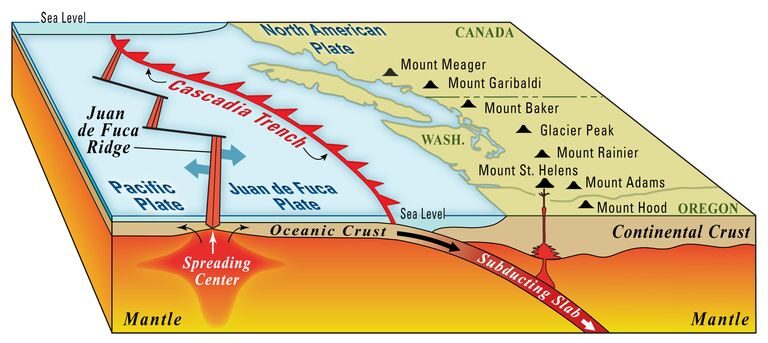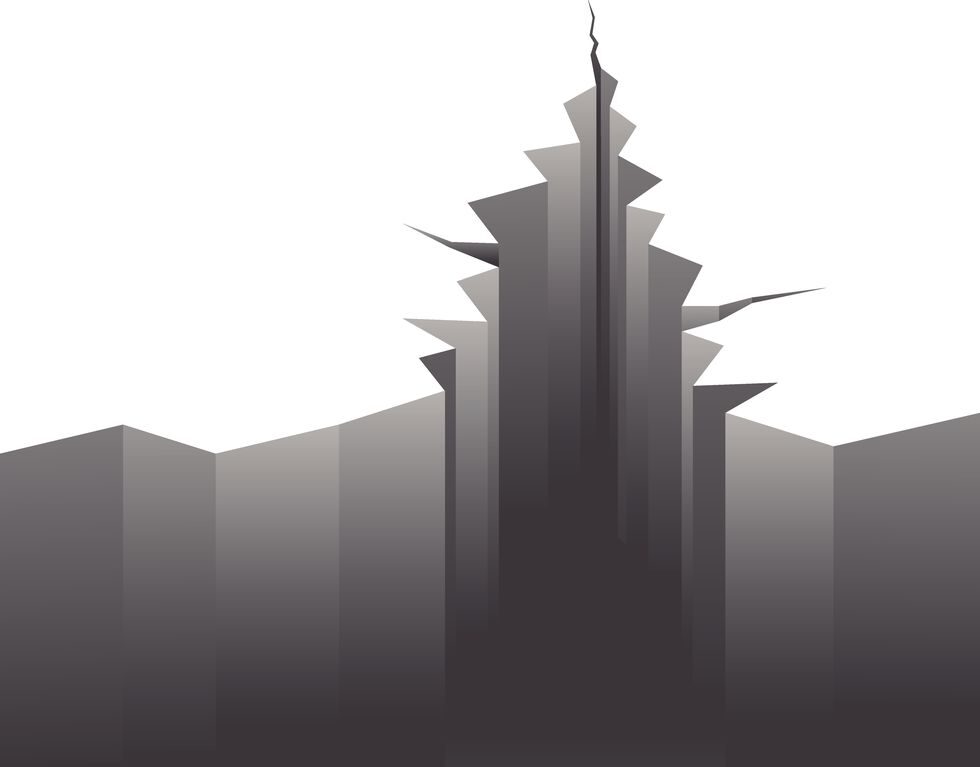For many people, natural disasters inspire both fascination and fear. They're a sign of nature's power to not only create, but also destroy. At the same time, they're a reminder of the human potential for ingenuity when it comes to protecting ourselves from the forces we cannot control.
In this case, there are two opposing forces: the North American Plate, an enormous tectonic plate that carries the entire continental United States on its back, versus the 90,000-square-mile Juan de Fuca Plate, located in the ocean off Washington, Oregon, and Northern California. For the past 200 million years, these two have been squaring off in an epic wrestling match in an area known as the Cascadia Subduction Zone, or CSZ. Trust us, nobody wants to see the end of this round. Yet only a few people seem truly bothered: seismologists, emergency management professionals, and those who have experienced earthquakes before.
It's certain that the Northwest will experience a devastating earthquake again, says Chris Goldfinger, an oceanographer at Oregon State University and one of the world's leading experts on subduction zone earthquakes. "We have no idea of the timing and how urgent it is," Goldfinger tells Pop Mech. "People tend to ignore it in that case." The majority of the public, as well as most governments in the Northwest, aren't yet pushing to implement the extensive infrastructure changes and early-warning communications systems needed to save tens of thousands of lives.
The Juan de Fuca Plate has been steadily pushing against the Pacific Coast as it slides beneath the North American Plate. But the roughly 47-million-square-mile North American Plate isn't budging. Instead, it's locked tightly against the Juan de Fuca's surface.
Here's the chilling prediction from the Cascadia Region Earthquake Workgroup (CREW) in its 2013 report on CSZ earthquakes: "Cascadia has now been building up strain for over 300 years, so the next great earthquake could happen at any time. Reduced to simpler odds, the chances that an earthquake as large as magnitude 9.0 will occur along the zone within the next 50 years are about one in ten."

When it comes again, the earthquake will be magnitude 8.0 or higher, which means the ground will warp and shudder for at least two minutes. That would be considered "the Big One." However, it's possible for the entire Cascadia Zone to rupture, turning this earthquake into a disaster movie-level catastrophe.
But there's still time to prepare, Goldfinger says, and geologists have some good ideas for protecting people and infrastructure in the event of the Big One. We can use Japan as an excellent example of preparedness policy, he says, because Japan has a 1,000-year head start on learning how to live with earthquakes.
"Japan is the most resilient country in the world in preparing for earthquakes. You can have a major earthquake in Tokyo, but there is likely to be not much actual damage," Goldfinger says. In fact, Japan experiences minor quakes every week. A national initiative for earthquake-resistant code requirements safeguards buildings. Before a quake arrives, early-warning systems automatically warn the public and shut down certain activities, including the railway system and power plants.
By contrast, no such systematic procedure exists in America. California's quake resilience has improved somewhat over the past 100 years. Previous quakes on the West Coast have caused enough devastation and loss of life to spur some changes. For example, building codes for new structures now require seismic design to withstand collapse.
Still, the main problem is that there's no coherent long-term strategy for preparing our nation against earthquakes. "Every town in America is left to its own devices to defend itself," Goldfinger says. For an unprepared town, even a small earthquake can cause major damage.
"This is a basic, simple thing. We have to start paying the bills a little at a time and save lives, or pay all at once. Earthquakes don't have to be disastrous," says Goldfinger. For example, it's possible to start retrofitting older buildings nationwide, prioritizing schools and hospitals in high-risk regions, he suggests.
To take matters into your own hands, you can consult a program like Shakeout, where people across the world can learn about earthquake drills specific to their region and prepare before a quake hits. More than 3.5 million participants are already registered. You can also turn to ShakeAlert: An Earthquake Early Warning System for the West Coast of the United States, which can alert people of earthquakes on their smartphones. It's run by the UC Berkeley Seismology Lab in California.




Then Yellowstone will rumble and finish the day off by wiping out 8 tenths of the USA.
Most citizens aren't freaking out because they are blissfully ignorant and that's how the authorities would like to keep it.